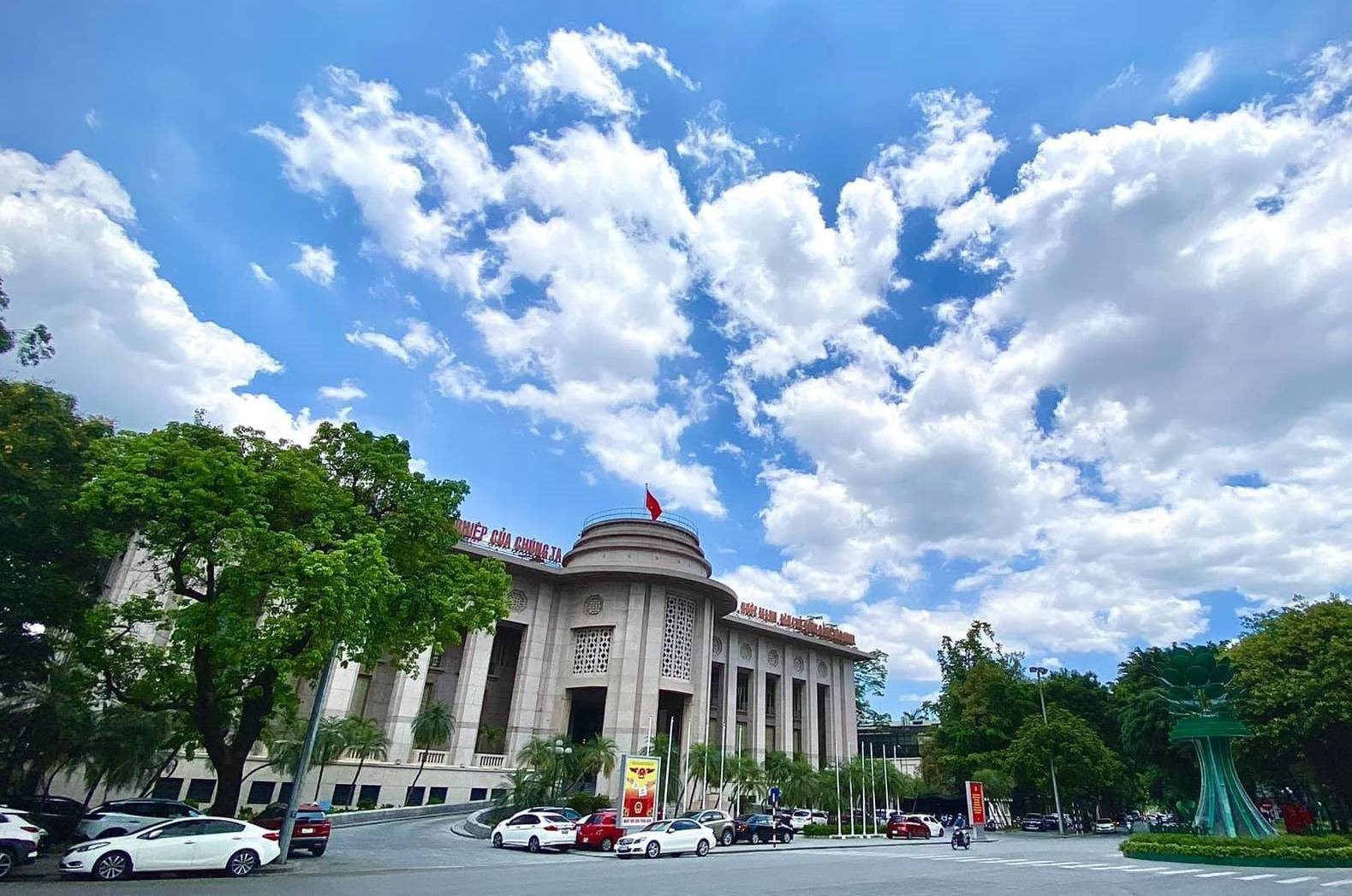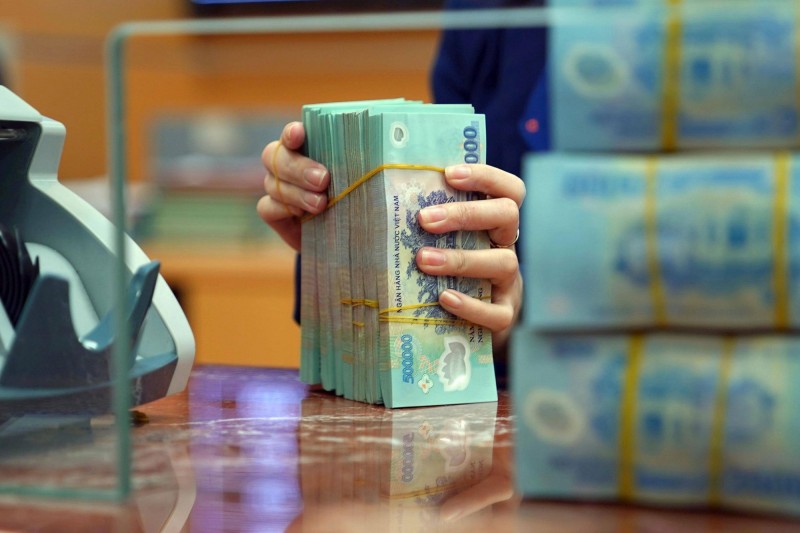Hospitality support to economic conditions by the Government
The State Bank of Vietnam continued to withdraw 10,000 trillion VND from the system through bond instruments with a maturity of 28 days. There were 13 participants who bid and 10 successful bidders. The winning interest rate on March 19 decreased 0.05 percentage points compared to the beginning of the week, down to 1.35% per annum. This is the 7th consecutive session that the Central Bank has issued bonds to withdraw liquidity from the banking system.
During the previous week, from March 11 to 15, the State Bank of Vietnam restarted its bond issuance activities after more than 4 months of suspension. According to experts, the resumption of bond issuance activities shows the orientation of reducing excess liquidity in the banking system by the Central Bank, thereby boosting the VND interest rates in the interbank market and indirectly curbing the increase of the USD/VND exchange rate, which is currently under pressure and being traded at historically high levels.
Therefore, after 7 sessions of restarting bond issuance activities, from March 11 to 19, the State Bank of Vietnam has net withdrawn about VND 100,000 trillion through bond channels, with the winning volume in the previous 6 sessions reaching VND 15,000 billion per session and today’s session reaching VND 10,000 billion. The winning interest rates are from 1.35% to 1.4%.

The Central Bank started its bond issuance activities again after more than 4 months of suspension
However, the interbank interest rates have turned downward in the last 2 trading sessions. According to the latest data published by the State Bank of Vietnam, the average interbank VND interest rate for overnight term (the main term accounting for about 90% of the transaction value) has decreased to 0.79% on March 15, from the rate of 1.21% recorded on March 14 and 1.47% on March 13.
The interest rates of other key terms also tend to decrease as follows: 1-week term decreased from 1.68% to 1.1%; 2-week term decreased from 1.81% to 1.43%; 1-month term decreased from 2.01% to 1.6%.
The decrease in interbank interest rates in conjunction with the number of participating members in the bond auction, still at a relatively high level, reflects that the liquidity of the system is still quite abundant. This will promote the possibility that the State Bank of Vietnam will continue to issue more bonds in the future.
Looking back at the most recent bond issuance period from September 21 to November 8, 2023, the State Bank of Vietnam carried out this activity for 35 consecutive sessions with a total volume of 360,345 trillion VND. In which, the highest net withdrawal (accumulated bond volume issued – accumulated bond volume due) in this period was 255,600 trillion VND.
After the Central Bank withdrew the money, the exchange rate began to decrease and maintained a downward trend until the end of November 2023. The overnight interbank interest rate increased sharply to over 2% during the period from September 21 to October 25, 2023 – in response to the withdrawal of money. The State Bank of Vietnam suspended the bond issuance from the session on November 9, 2023 when the exchange rate began to cool down and gradually returned the amount it had withdrawn from the system earlier.
Will credit soon increase again?
Evaluating the recent moves of the State Bank of Vietnam, economic expert – Mr. Can Van Luc, a member of the National Financial and Monetary Policy Advisory Council, believed that the net withdrawal mainly came from the abundant liquidity of the system. In the early part of this year, credit growth was very slow and even negative, while capital mobilization also grew slowly but higher than credit.

Credit by the end of February decreased by about 1% and estimated capital mobilization decreased by about 0.7%
Referring to the statistics from the State Bank of Vietnam, the expert said that credit by the end of February decreased by about 1% and estimated capital mobilization decreased by about 0.7%. This led to abundant liquidity in the system, and the interbank interest rate decreased sharply. In the session on March 11, the overnight interbank interest rate decreased to 1.17% per annum, a sharp decrease compared to the peak level recorded on February 21 (4.14%), approaching the low level that was maintained for a long time during the previous excess liquidity period (about 0.14 – 0.15% per annum).
“Abundant liquidity requires the State Bank of Vietnam to withdraw liquidity. However, this is not the most important cause,” the expert said.
He further added that the withdrawal of money through bond auction channels aims to push the interbank interest rate higher, closer to the USD interest rate in order to reduce the pressure on the exchange rate. According to the latest meeting of the Federal Reserve (Fed), the Fed will not cut interest rates at least until the first half of this year.
“The fact that the Fed maintains high interest rates while Vietnam’s interest rates are too low will put pressure on the exchange rate. The evidence is that the exchange rate has fluctuated, from the beginning of the year to now, the USD/VND exchange rate has increased by about 1.5%,” said Mr. Can Van Luc, analyzing.
The expert also gave an assessment that last year, the State Bank of Vietnam had used this tool in September and is now starting to use it again. Depending on the liquidity at banks because credit growth is low, the State Bank of Vietnam will decide the net withdrawal volume.
“However, in my opinion, this action will not be used too frequently, the State Bank of Vietnam will not intervene too strongly because its cost is the interest rate,” the expert said and added that it will be difficult to have a scenario where the State Bank of Vietnam continuously withdraws liquidity as much as it did in September of last year.
Meanwhile, an expert with years of experience in fundraising activities at banks believes that the scale of this bond issuance may be equivalent or less than the period of September 2023 because credit will increase again and liquidity system will no longer be excess.
In a new analysis report published, BSC assesses that the bond net withdrawal activity is a transactional, regulatory tool and does not imply policy reversal. The short-term goal of the State Bank of Vietnam in bond issuance is to regulate short-term market liquidity to impact exchange rates. In the long run, the bond issuance is to stabilize exchange rates, interest rates, liquidity… to serve the long-term goals of monetary policy.
Previously, in the period from 2018 to 2023, the State Bank of Vietnam had implemented this transaction regularly many times a year. Statistics from BIDV Securities Company (BSC) show that the State Bank of Vietnam carried out an average of about 9.7 net withdrawals per year in this period, the number of days from the beginning to the end of each cycle was about 13.4 days on average. The average net withdrawal value per cycle was 43,385 trillion VND. The largest net withdrawal value per cycle was 191,100 trillion VND in 2022.
With the above assessments, BSC predicts that the largest net withdrawal scale (accumulated bond volume issued – accumulated bond volume due) in this period can be about 150,000 trillion VND.
Meanwhile, SSI Securities expects that the State Bank of Vietnam will continue to maintain net withdrawal activities for at least the next 2 weeks. If maintaining the current bond issuance rate (15,000 billion VND/session), based on SSI’s forecast, it can be estimated that the total net withdrawal volume will be around more than 200,000 trillion VND, equivalent to the late period of 2023.





































